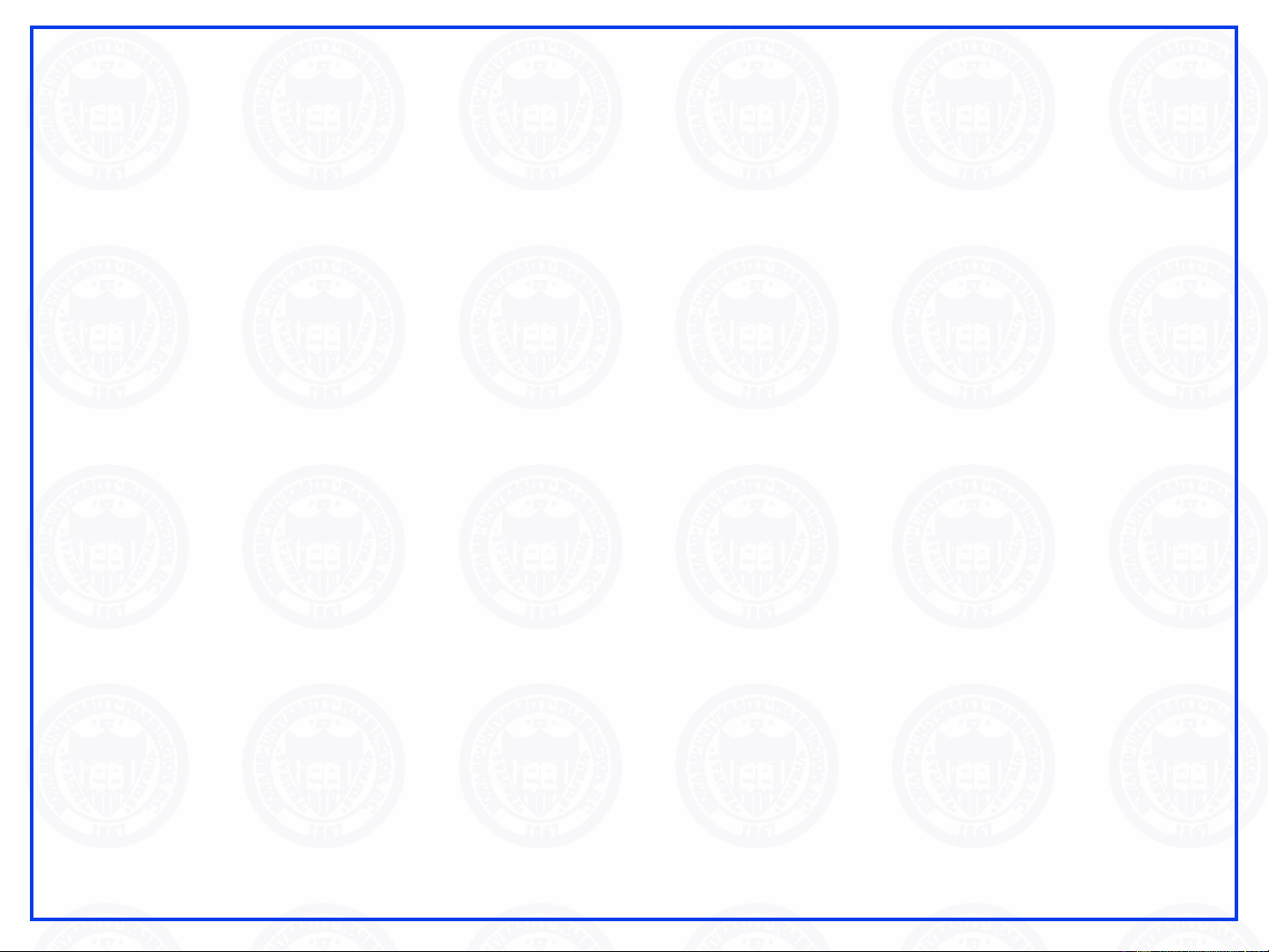
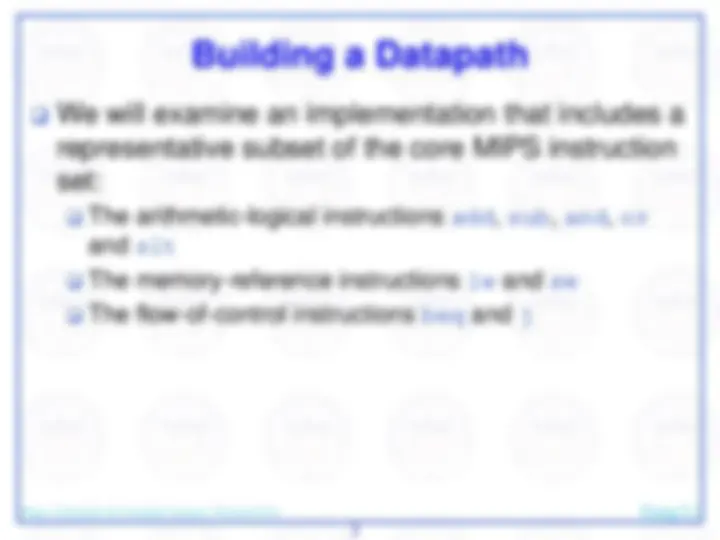
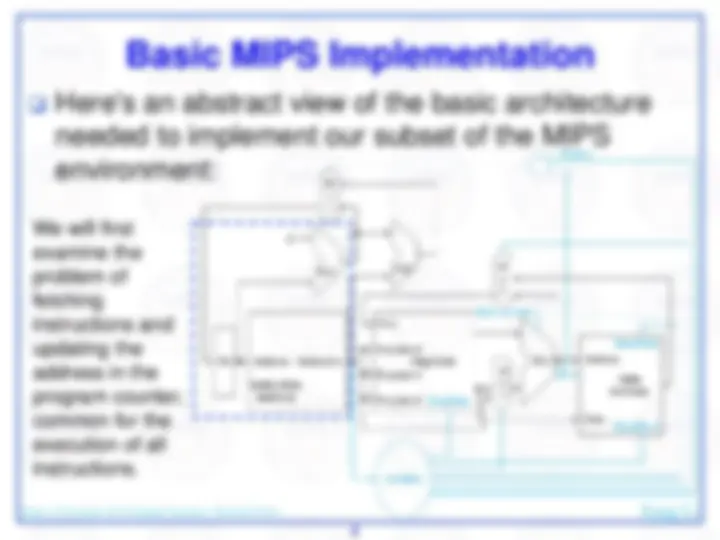
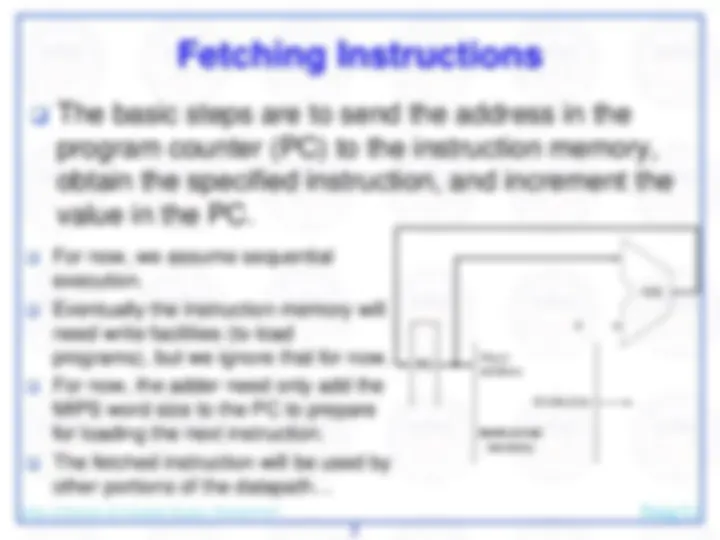
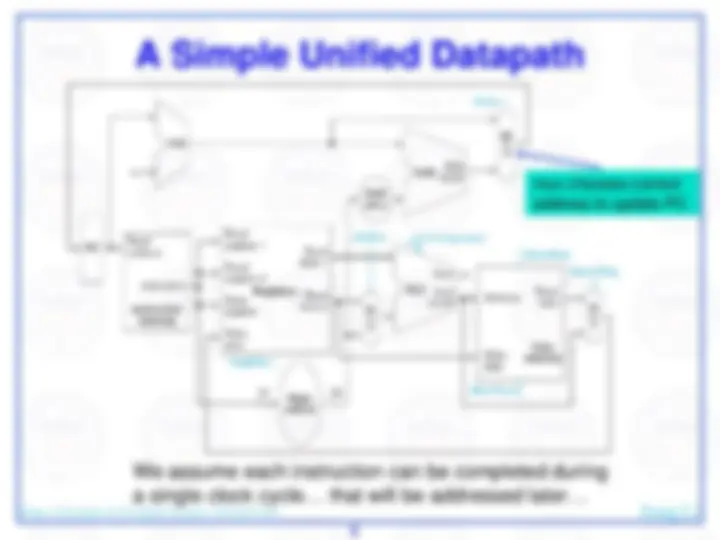
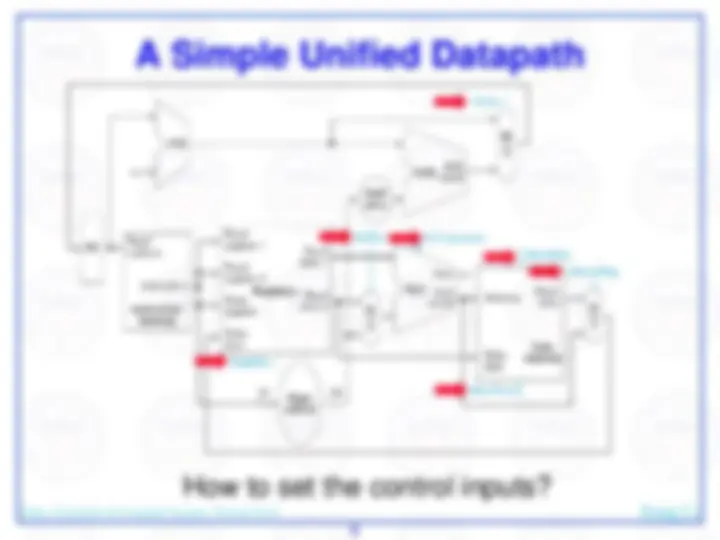
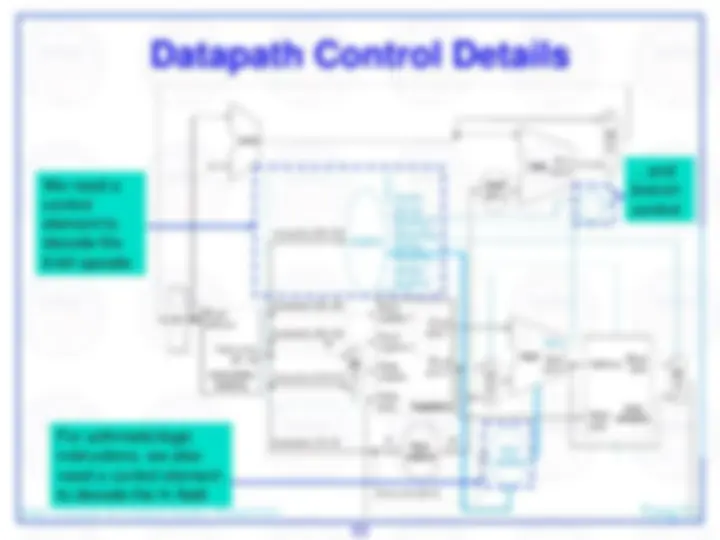
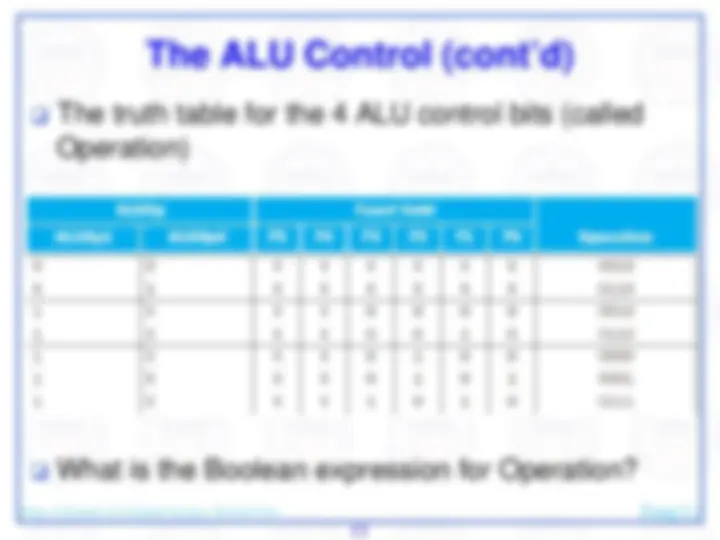
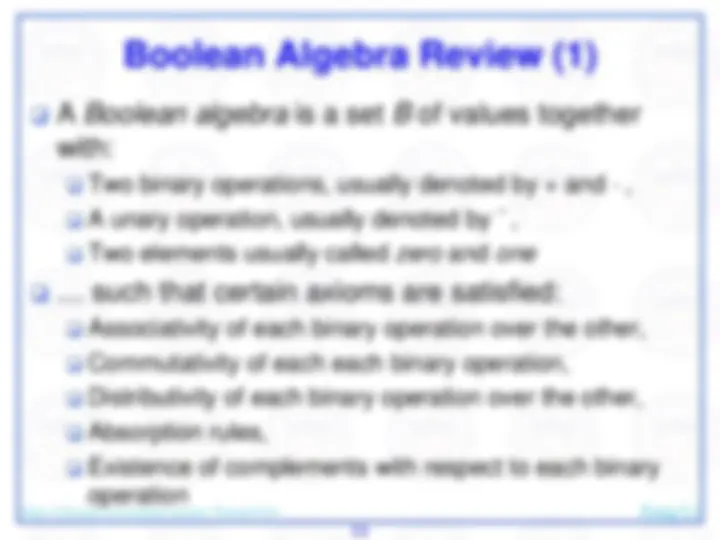
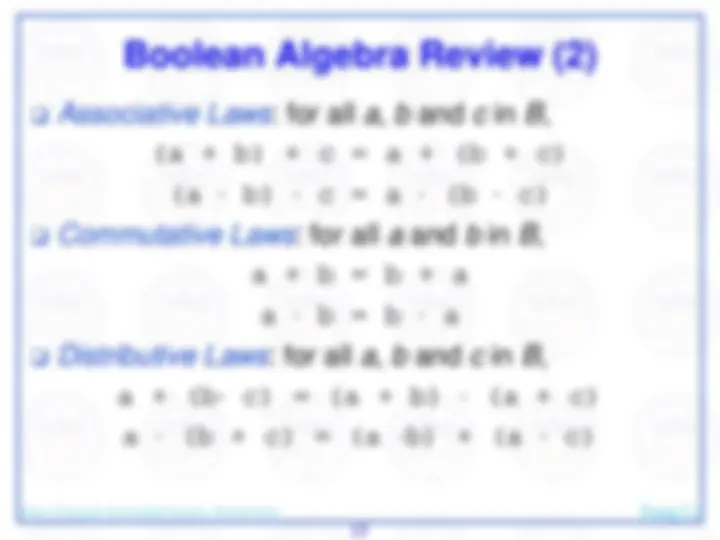
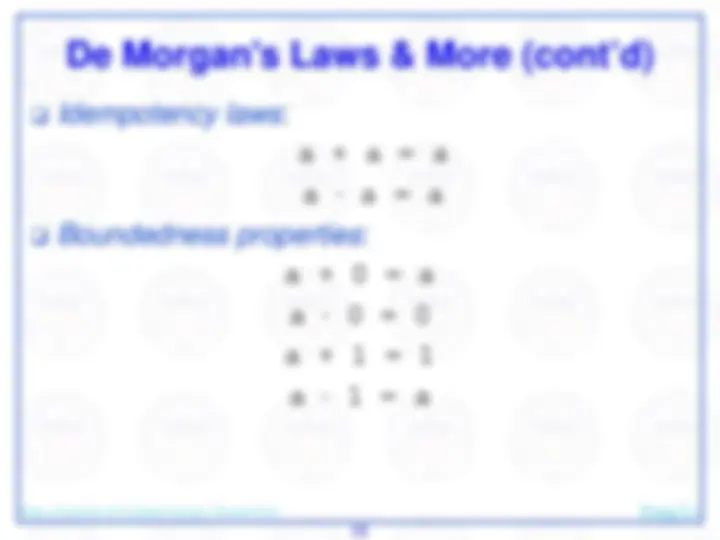
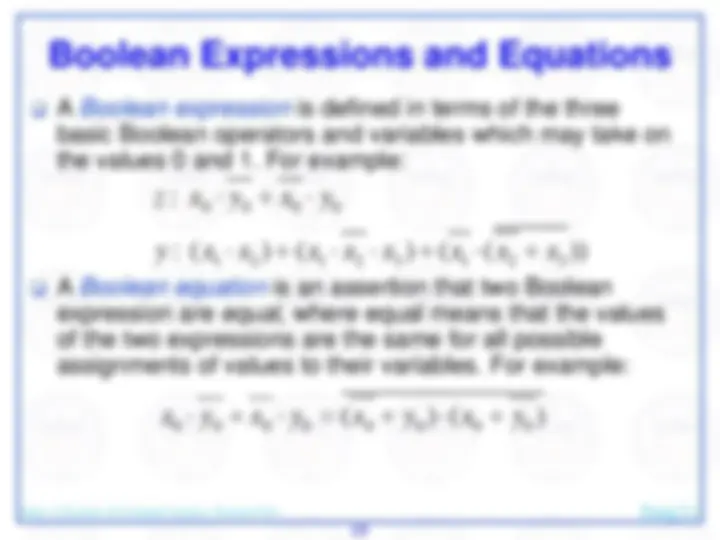
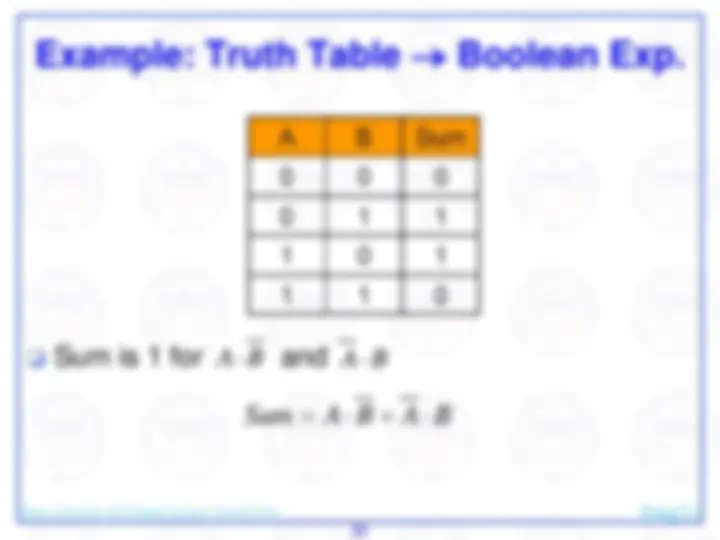
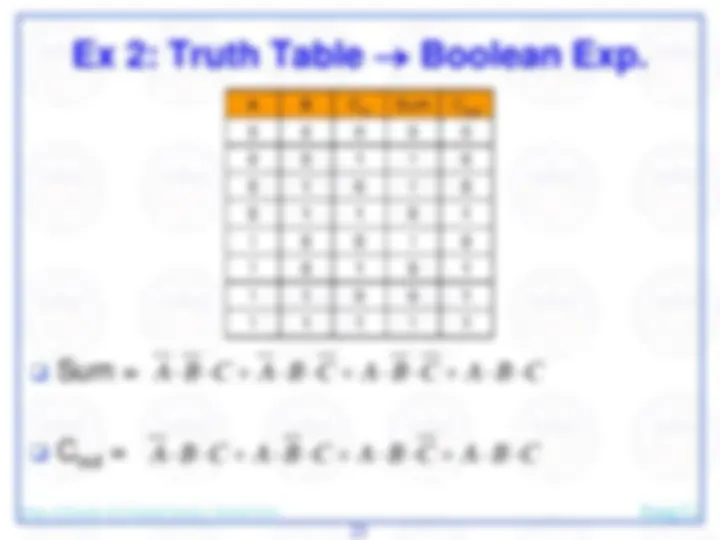
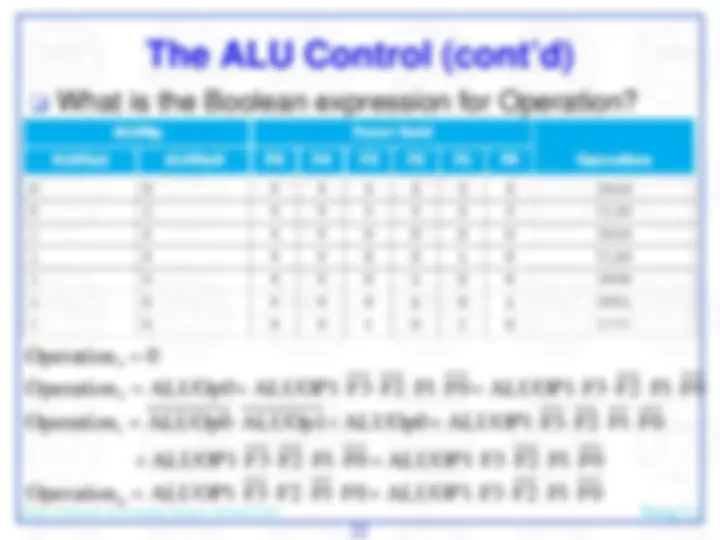
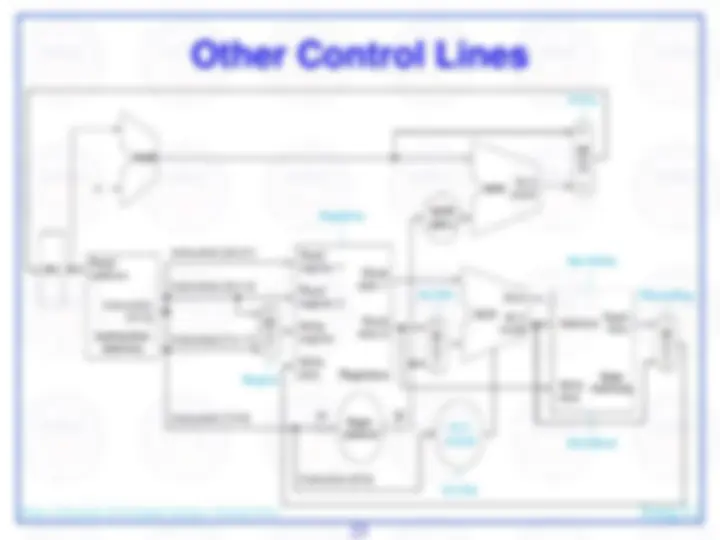
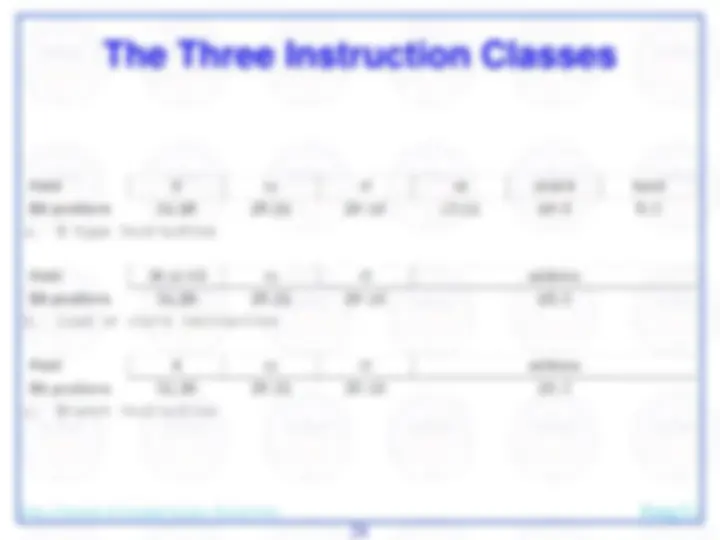
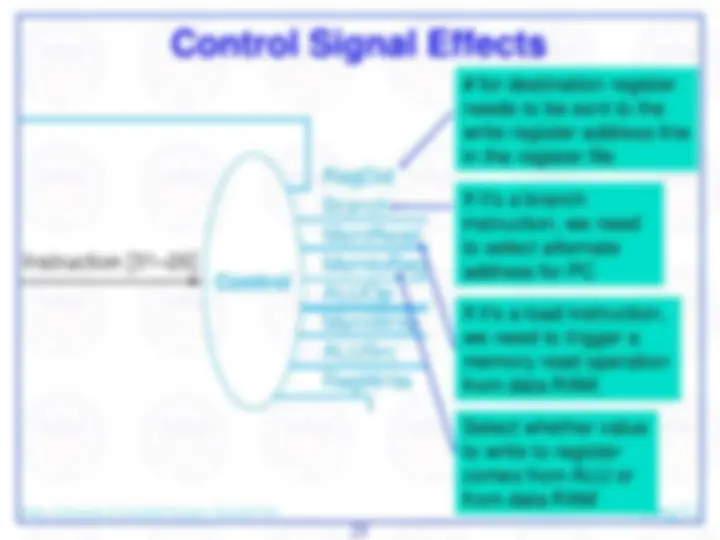
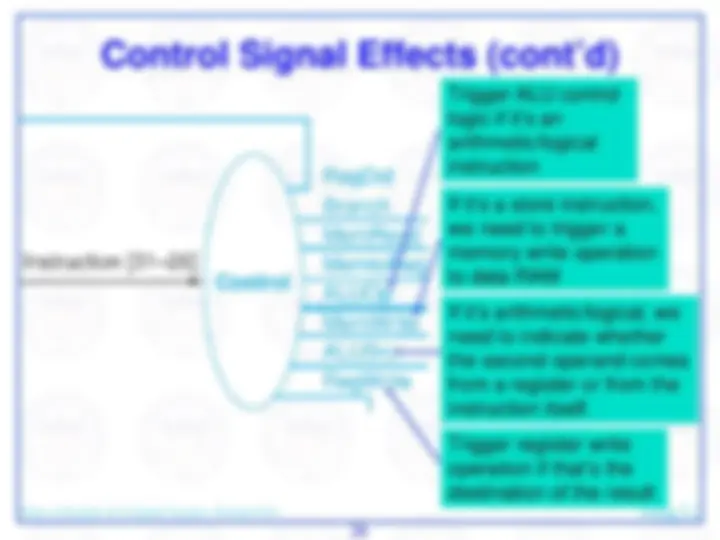
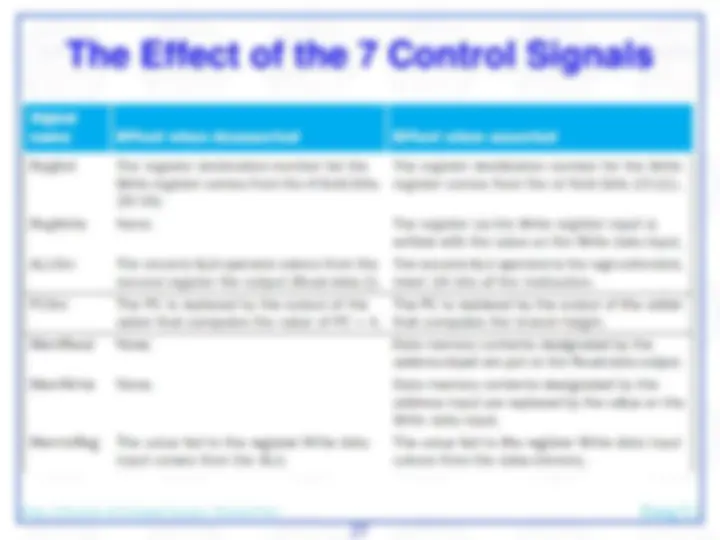
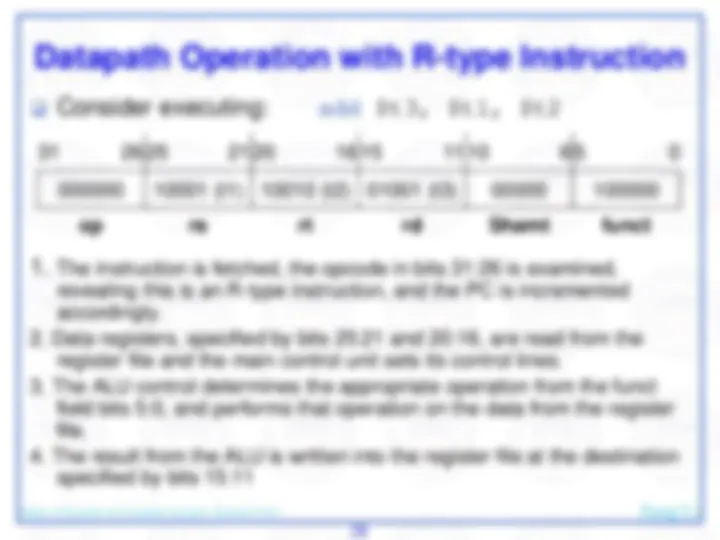
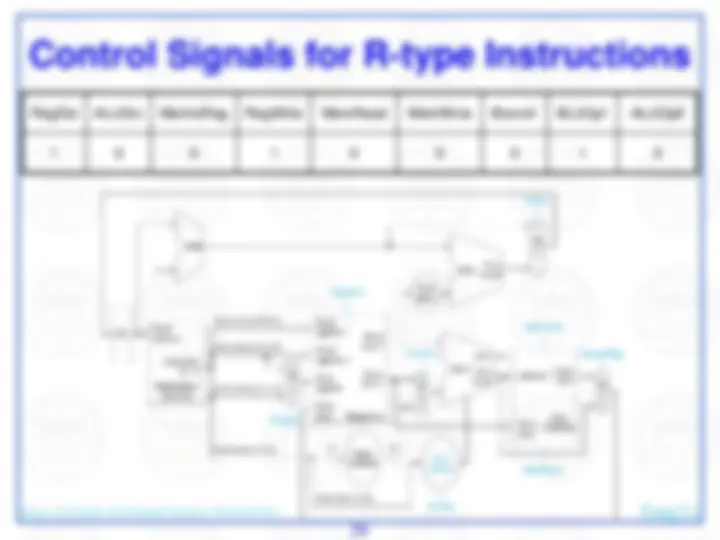
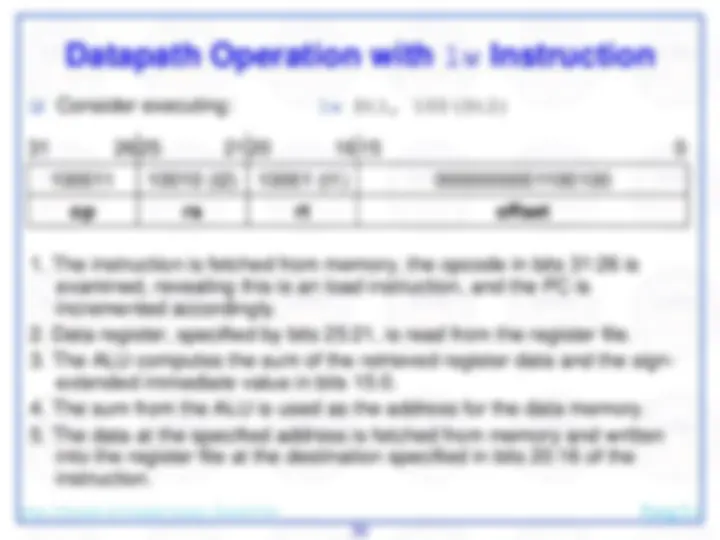
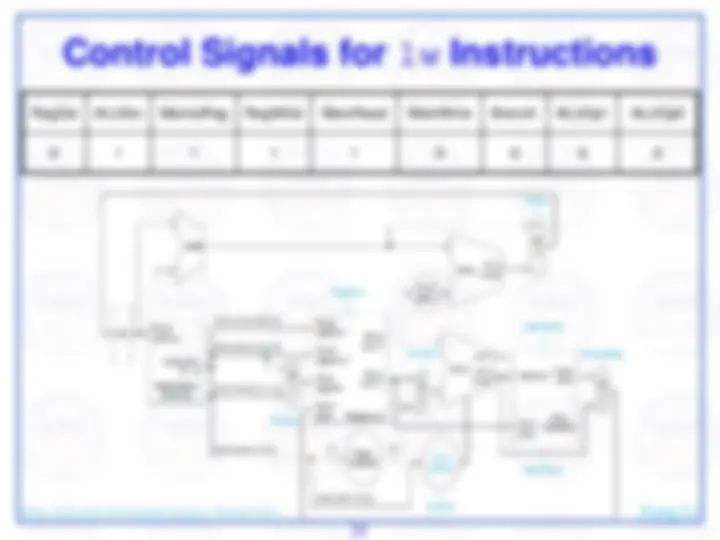
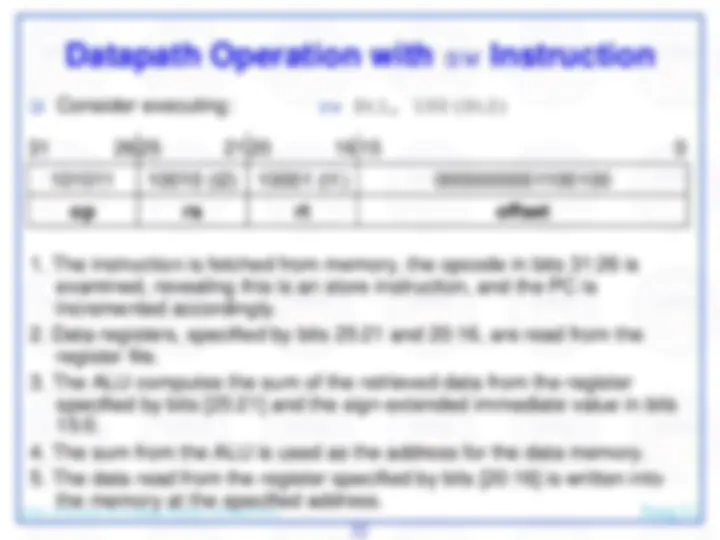
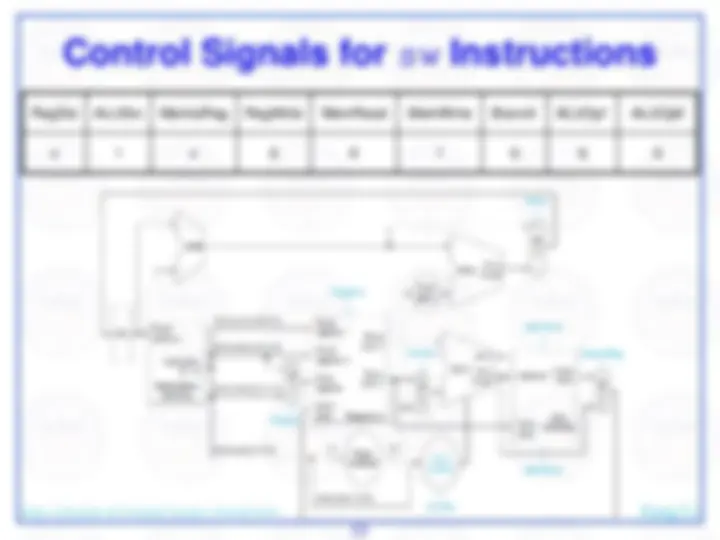
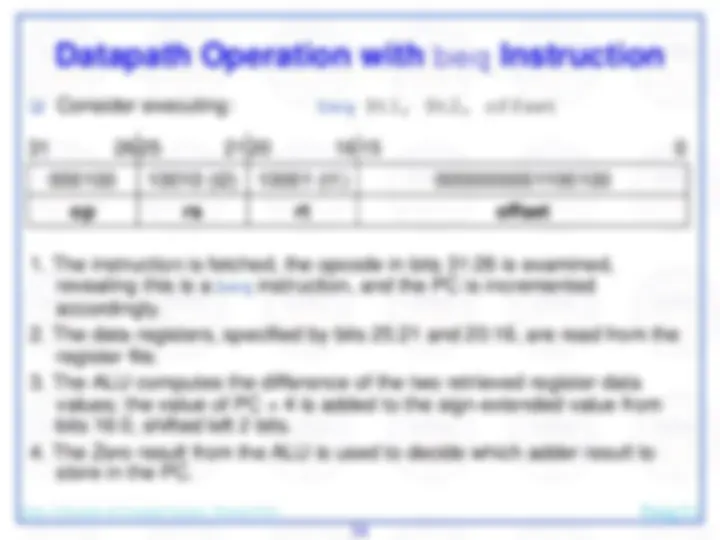
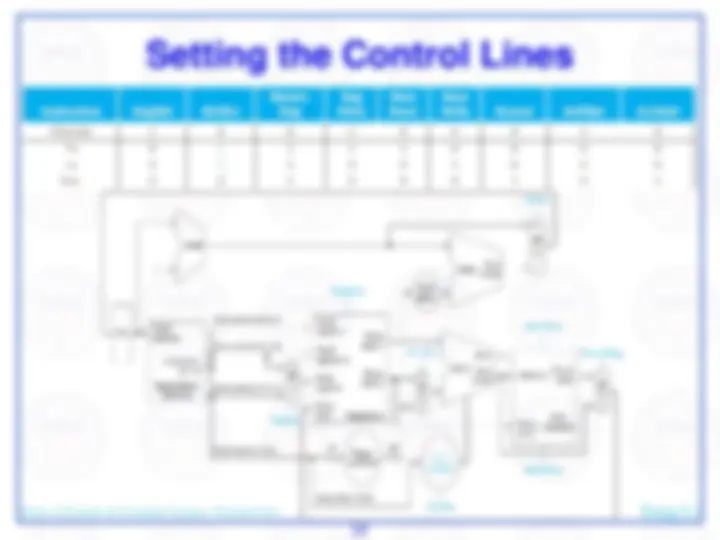
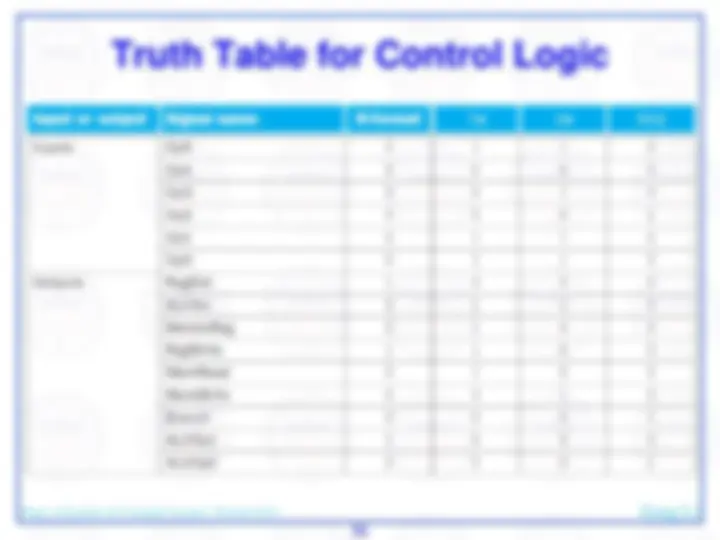
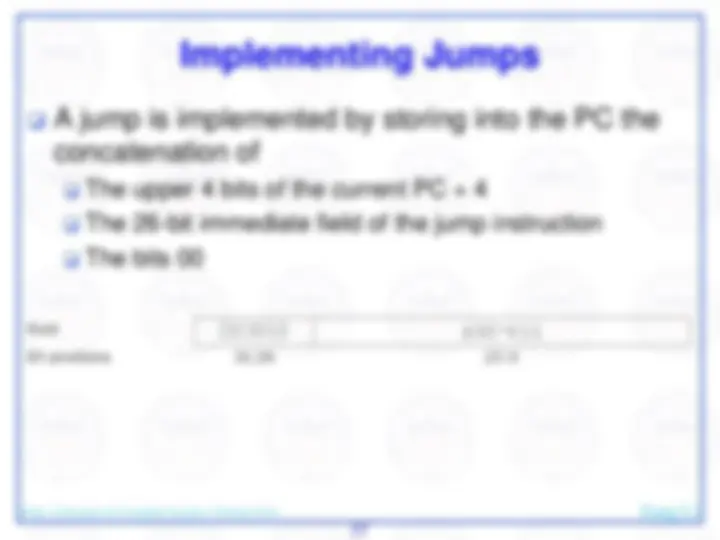
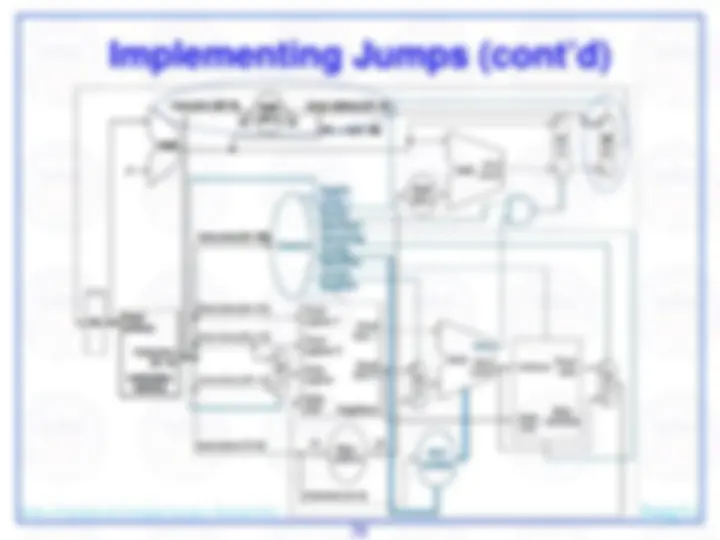
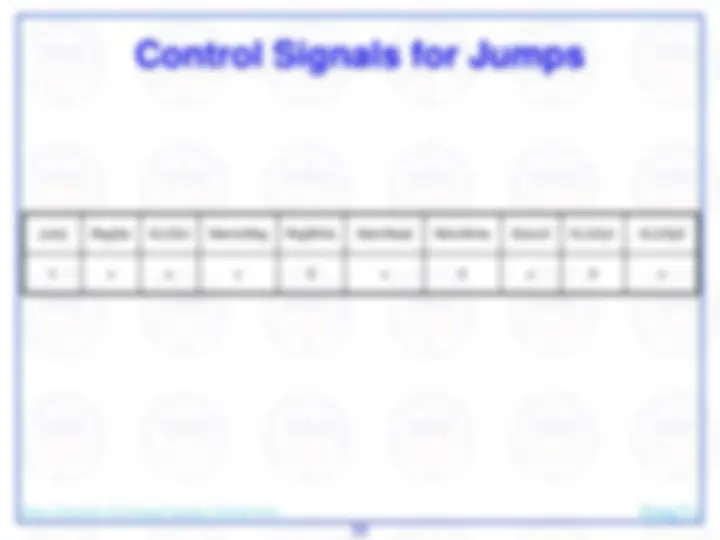
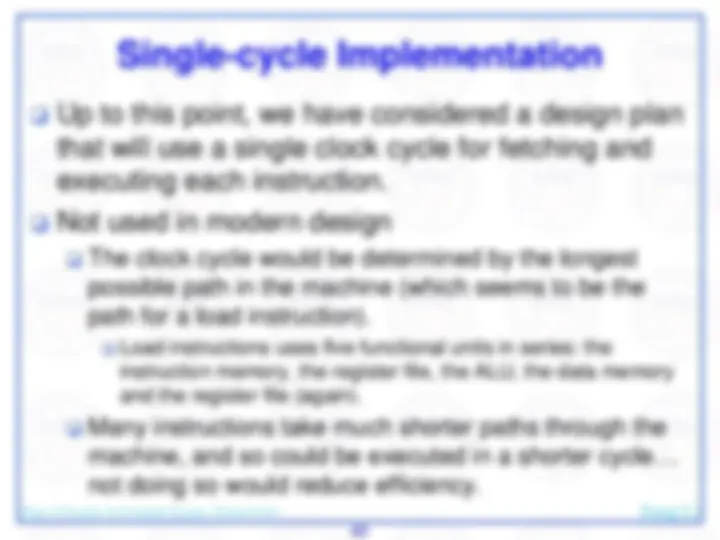
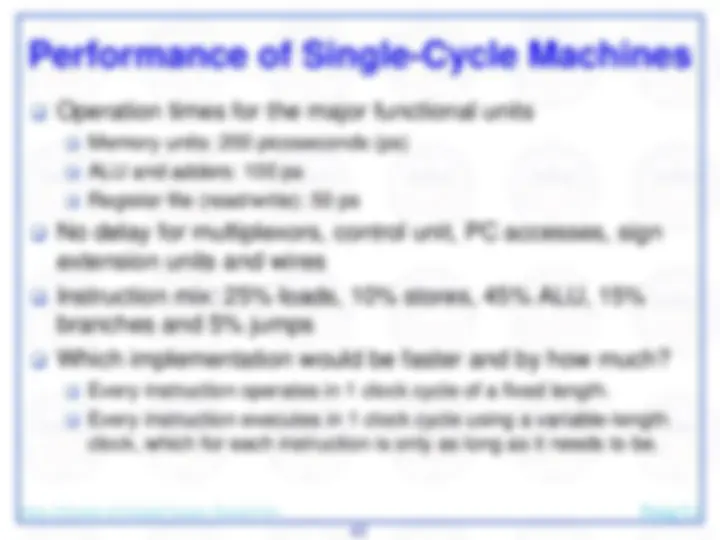
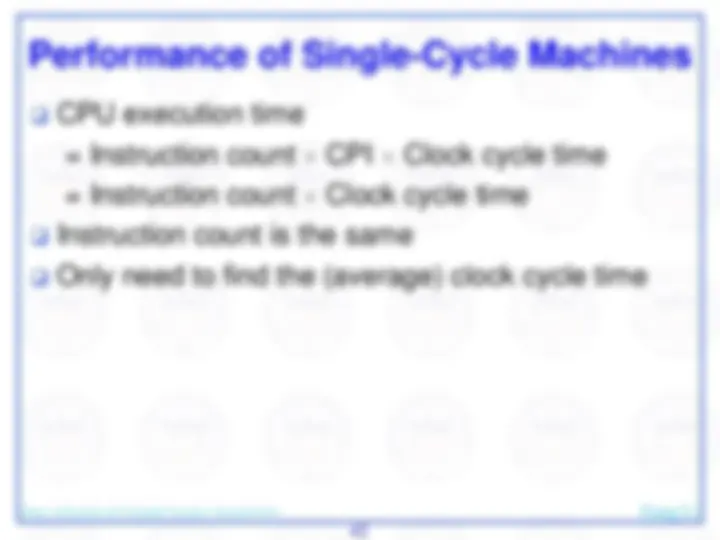
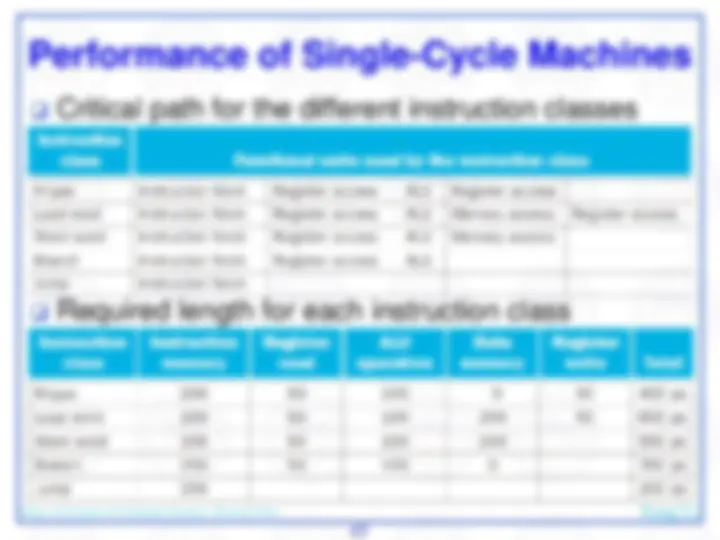
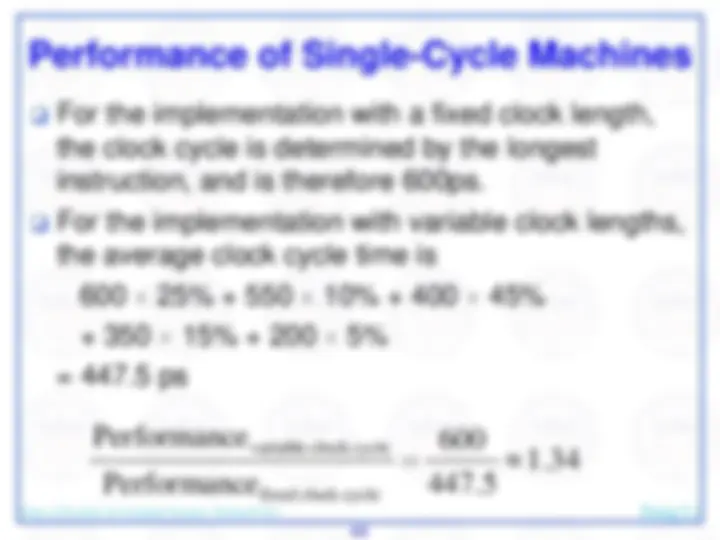
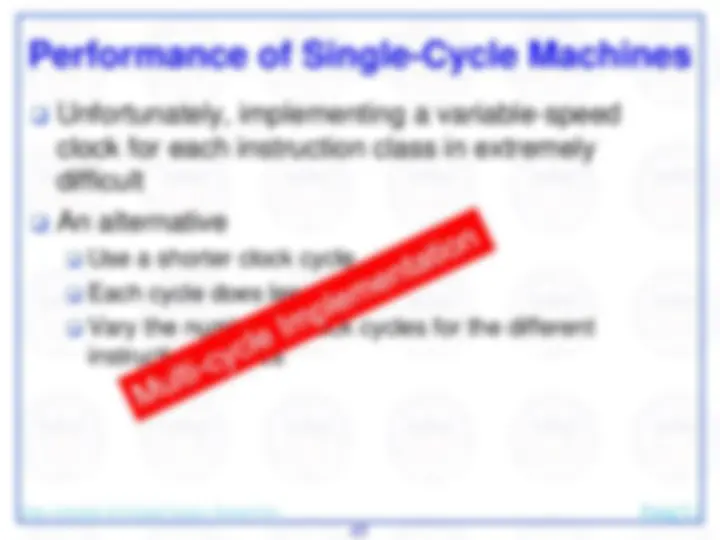
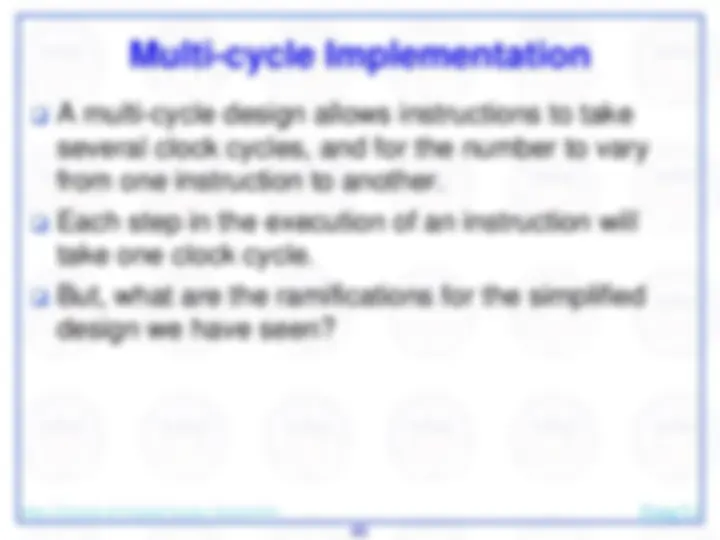
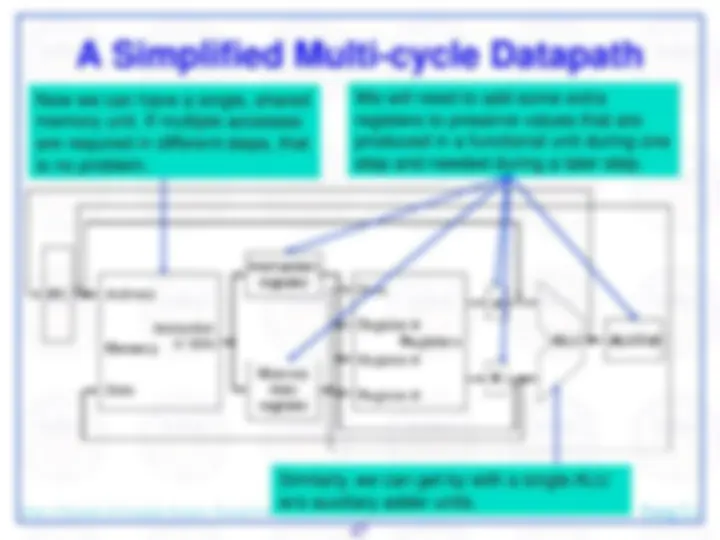
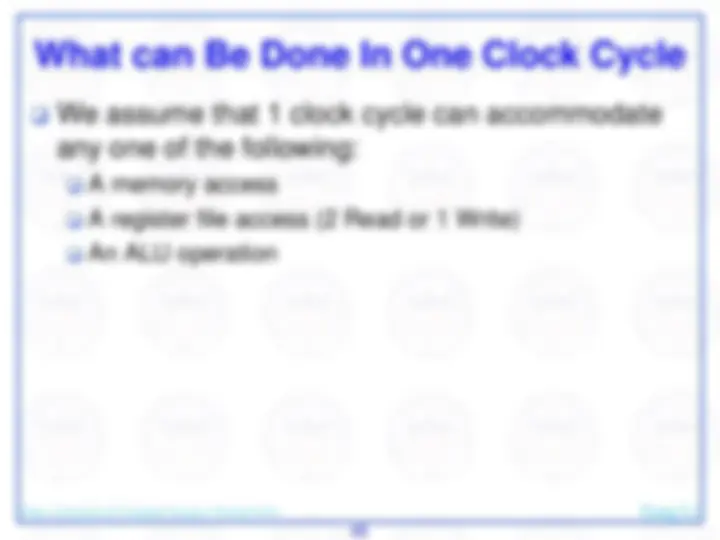
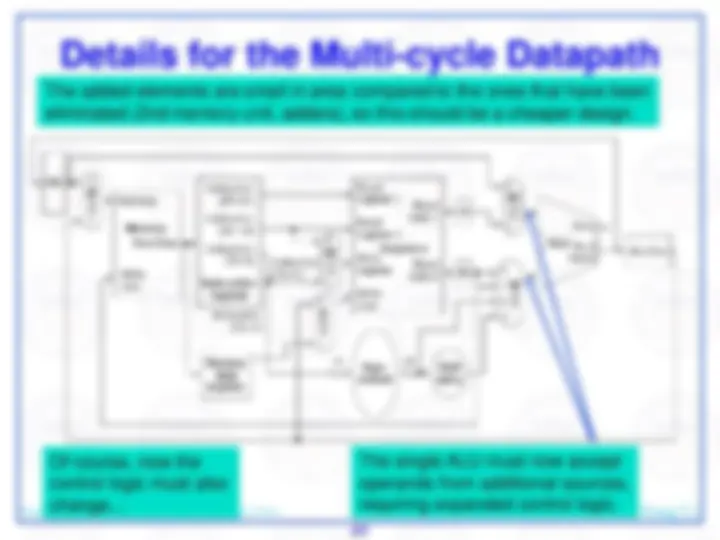
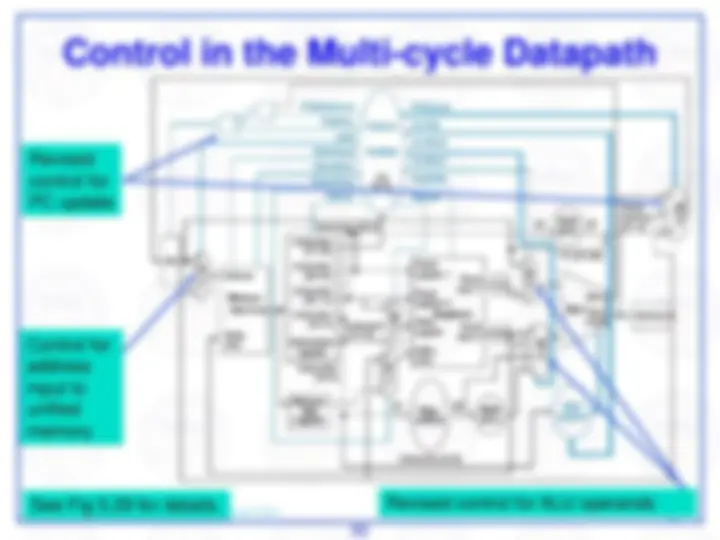
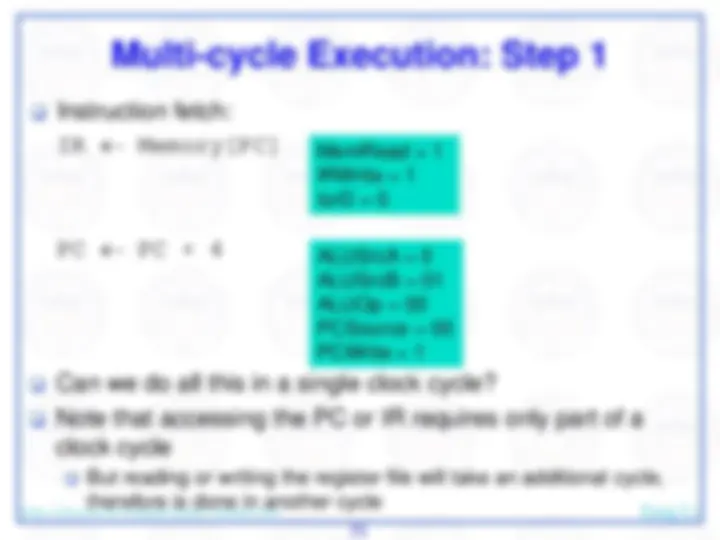
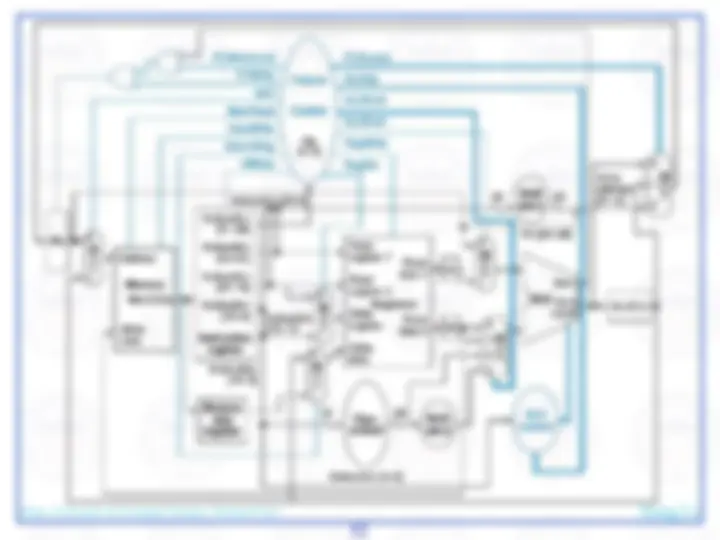
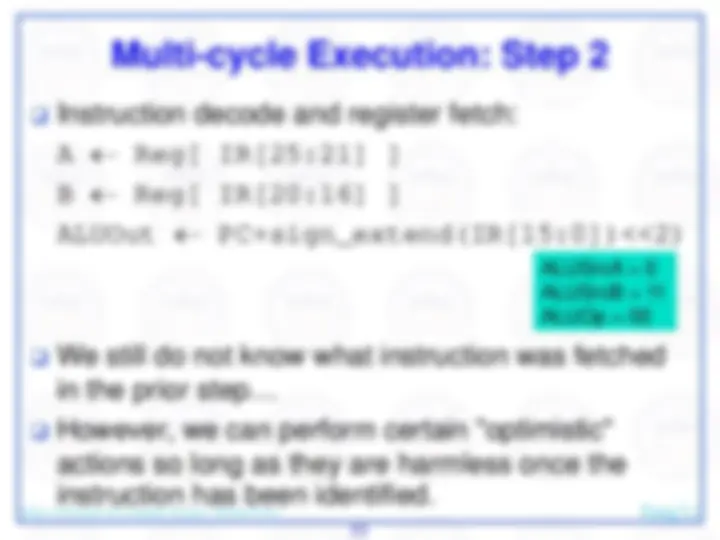
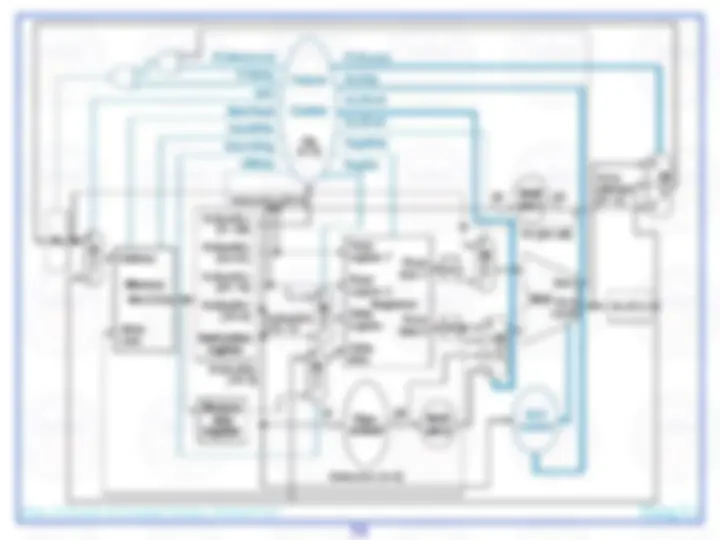
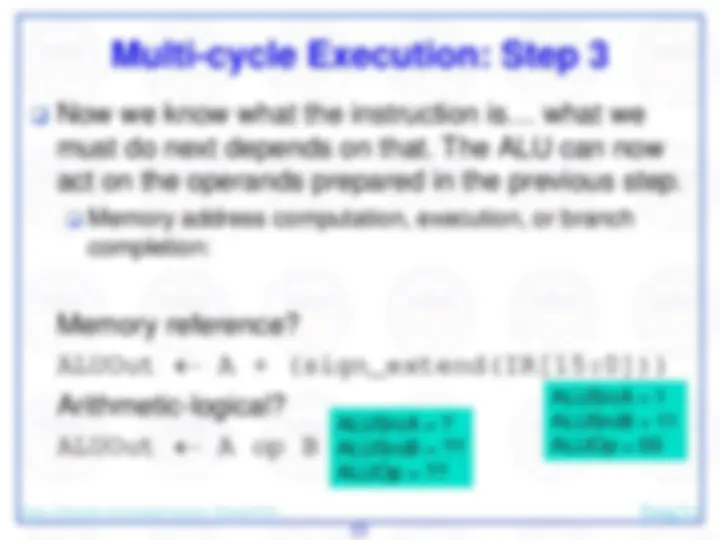
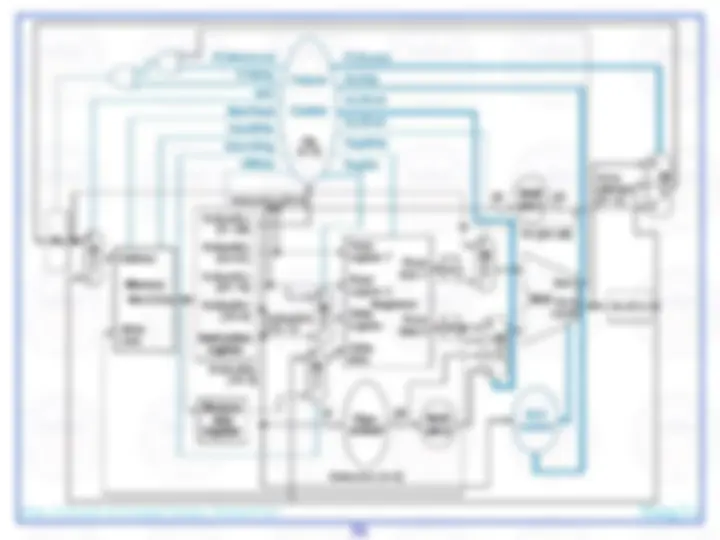
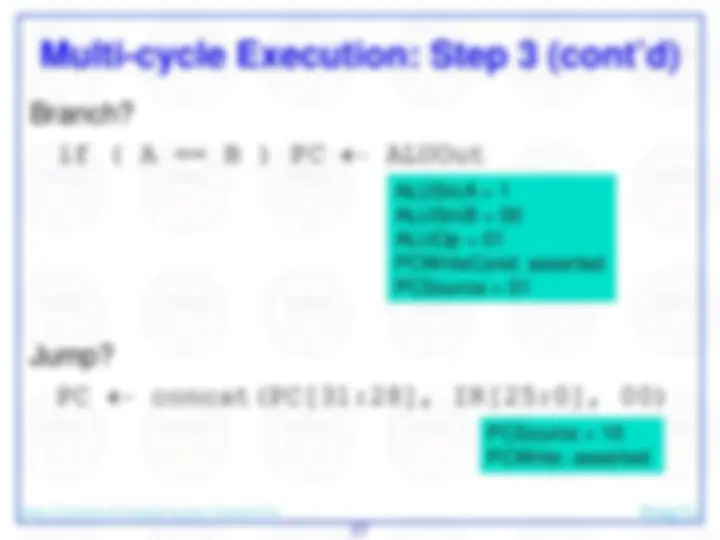
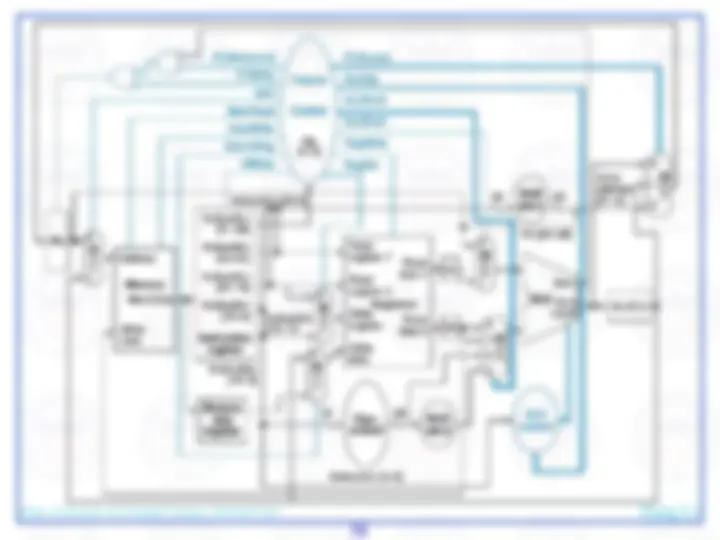
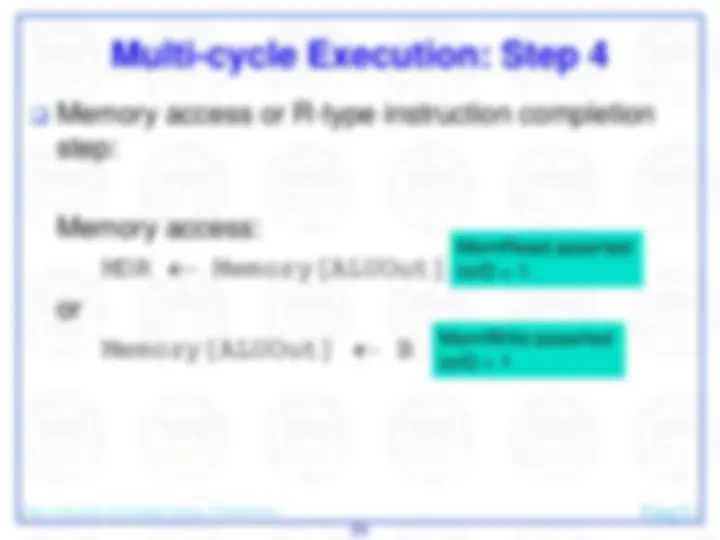
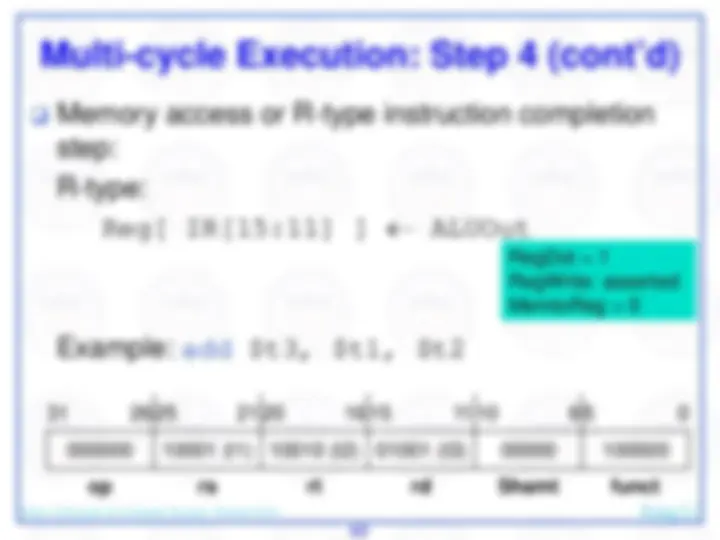
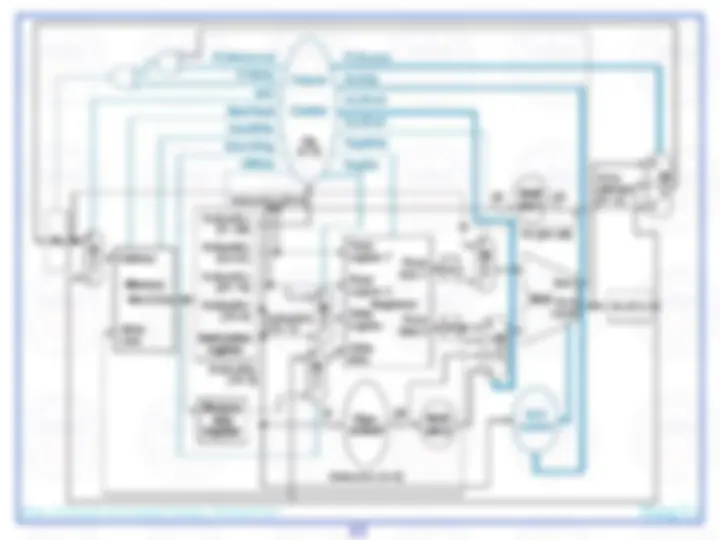
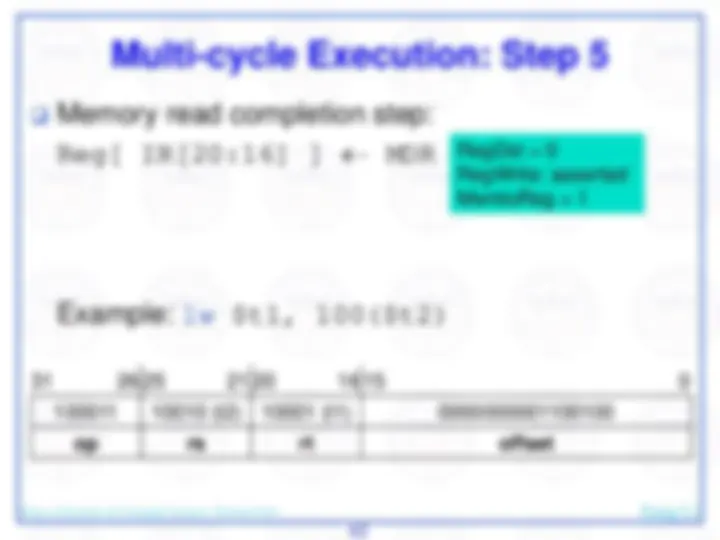
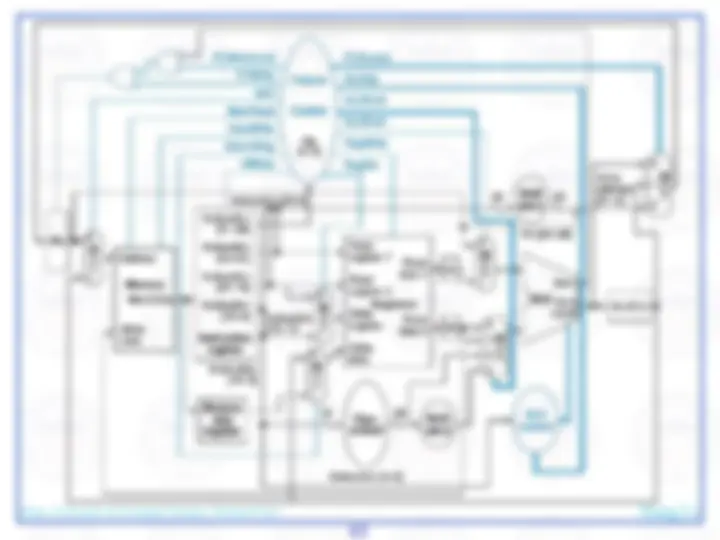
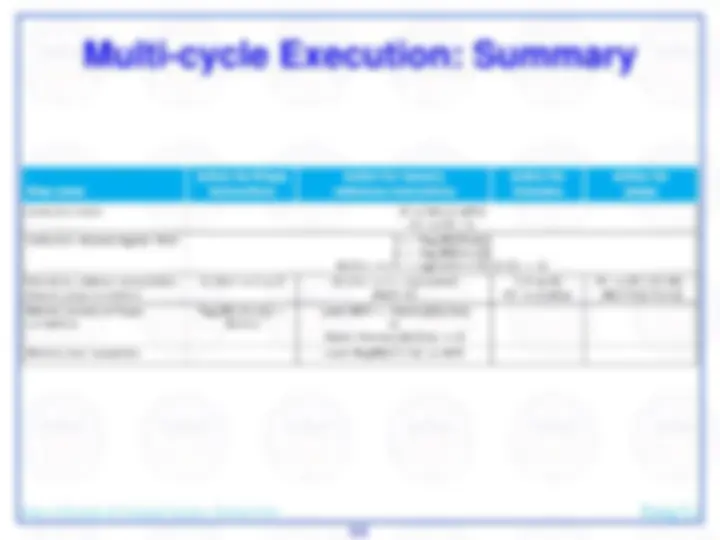
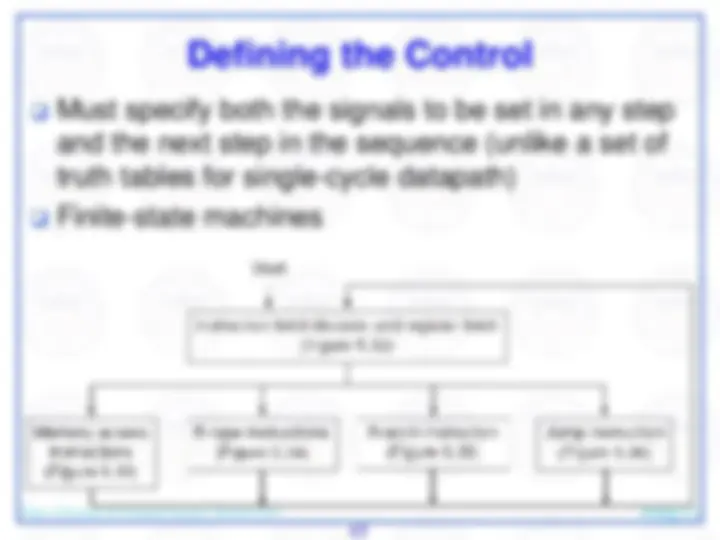
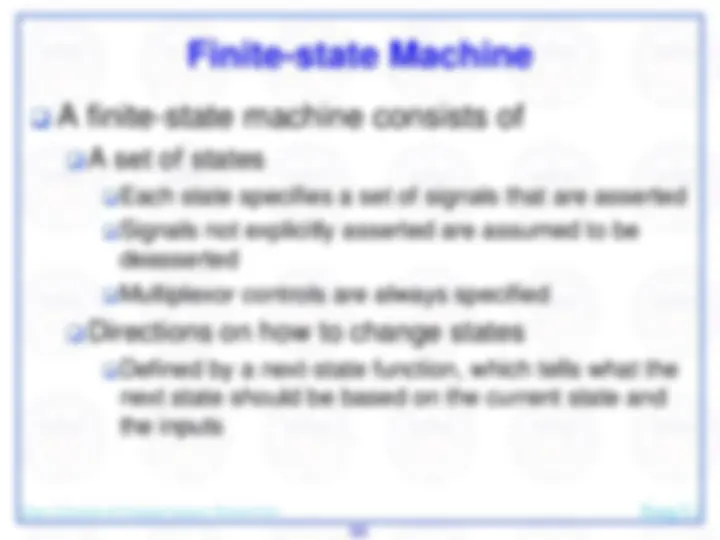
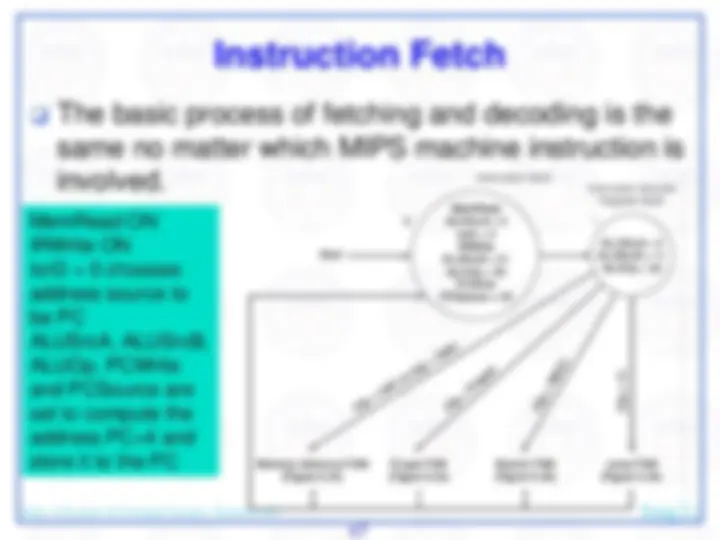
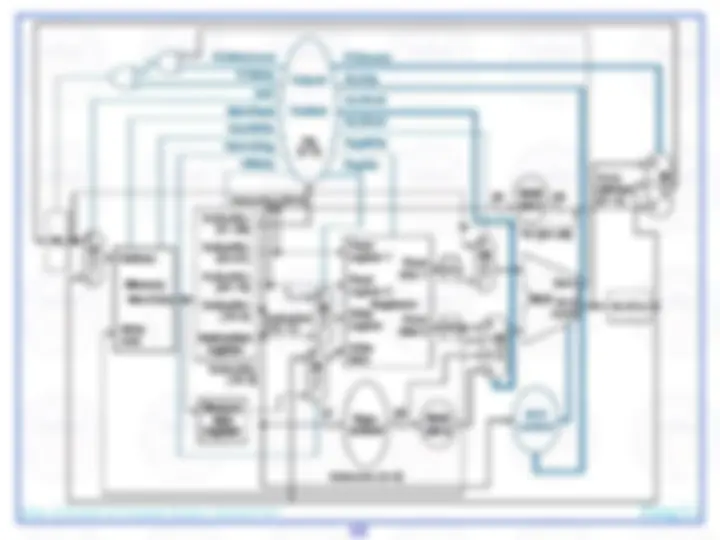
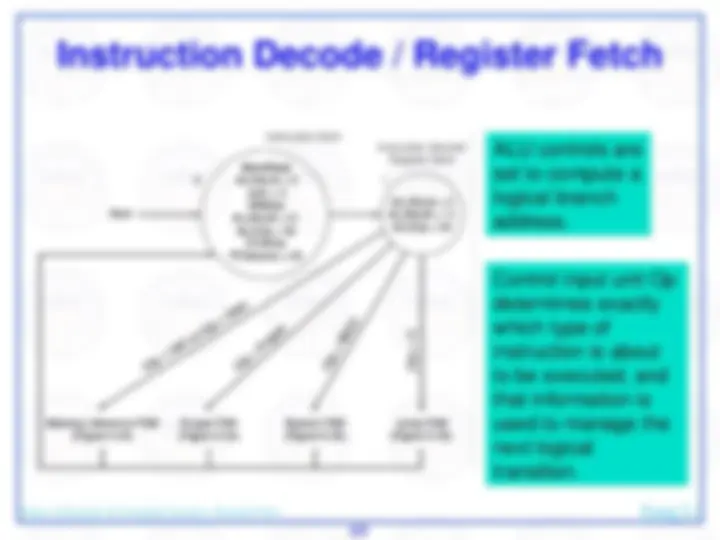
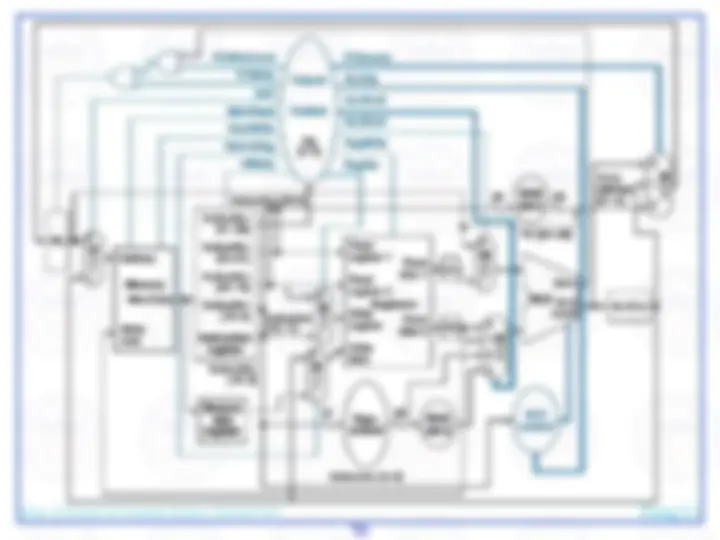
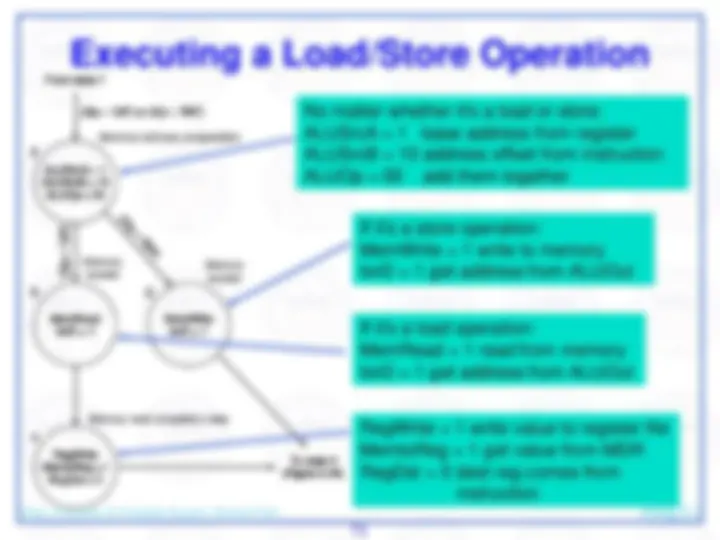
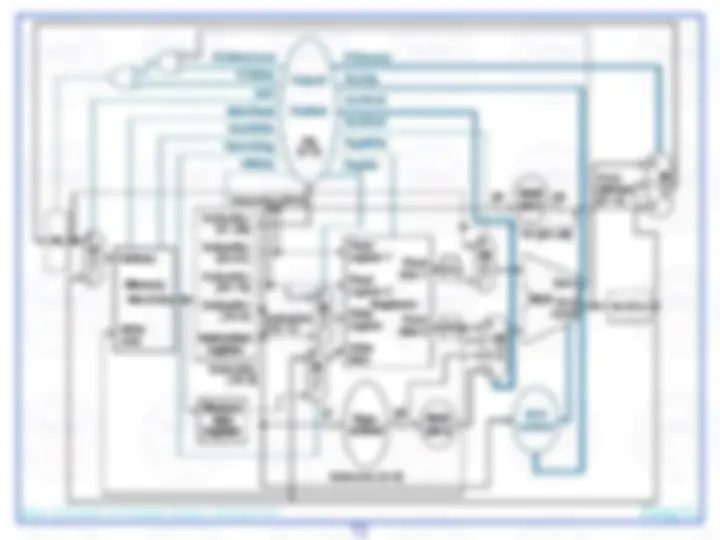
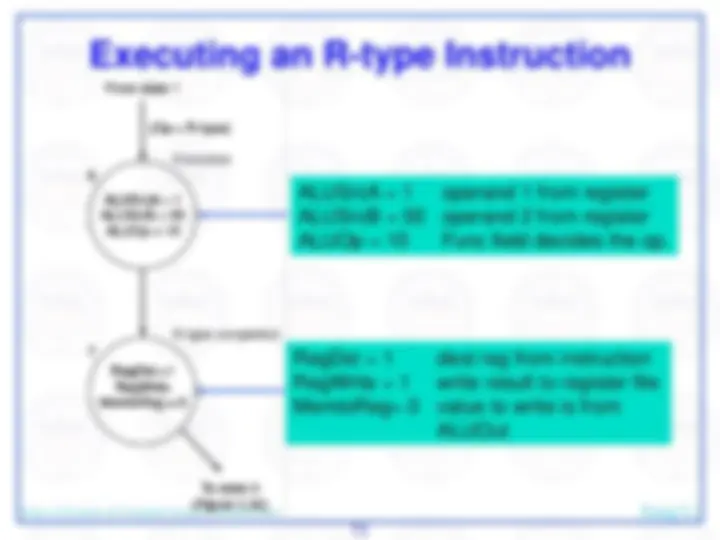
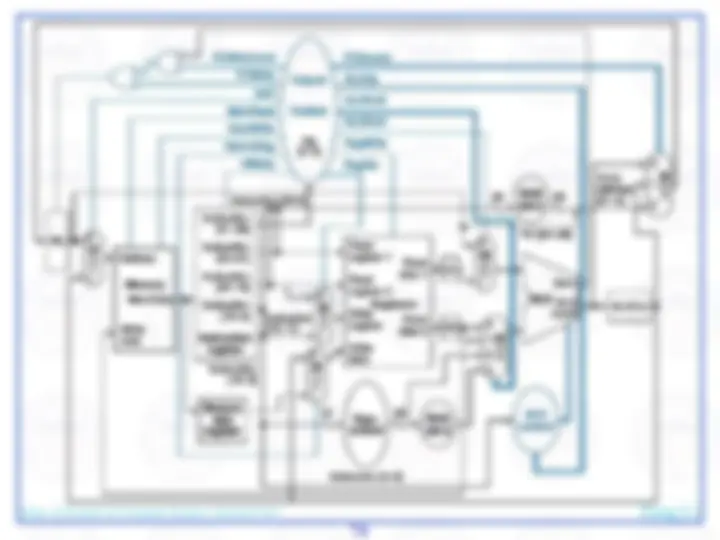
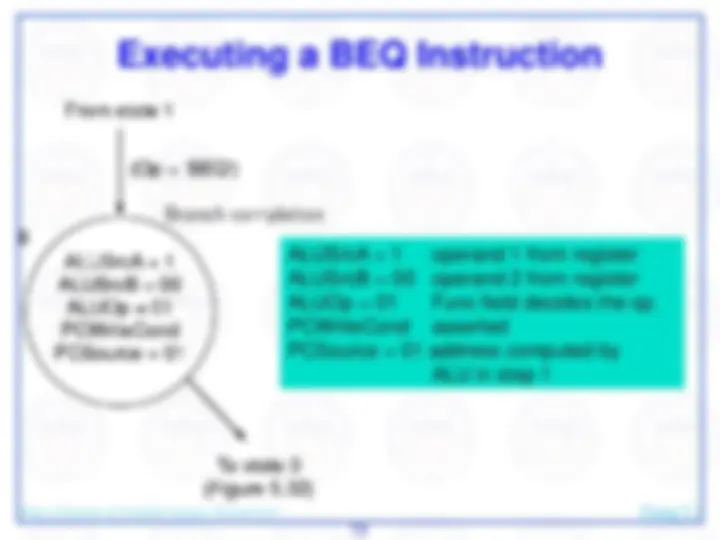
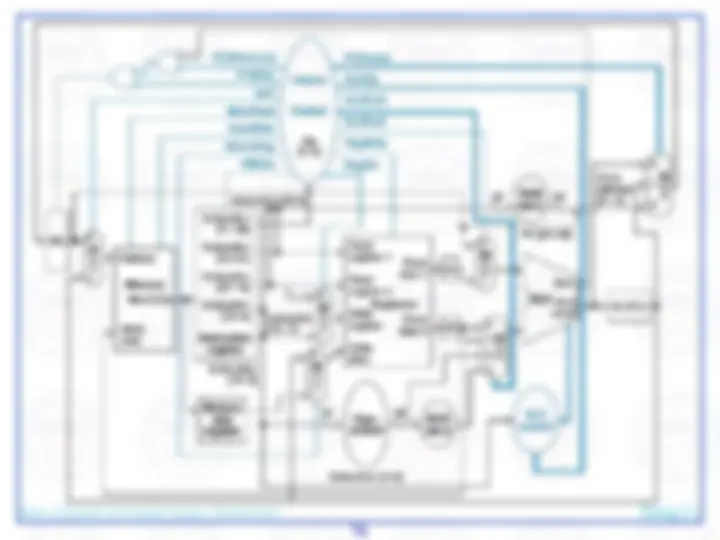
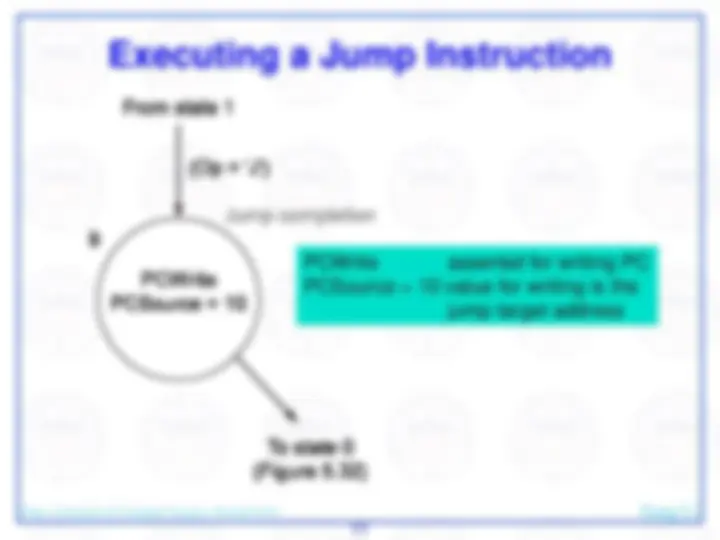
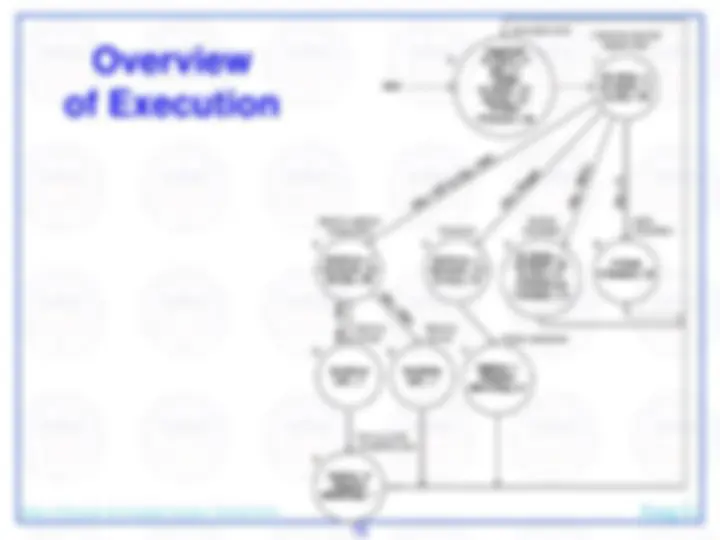
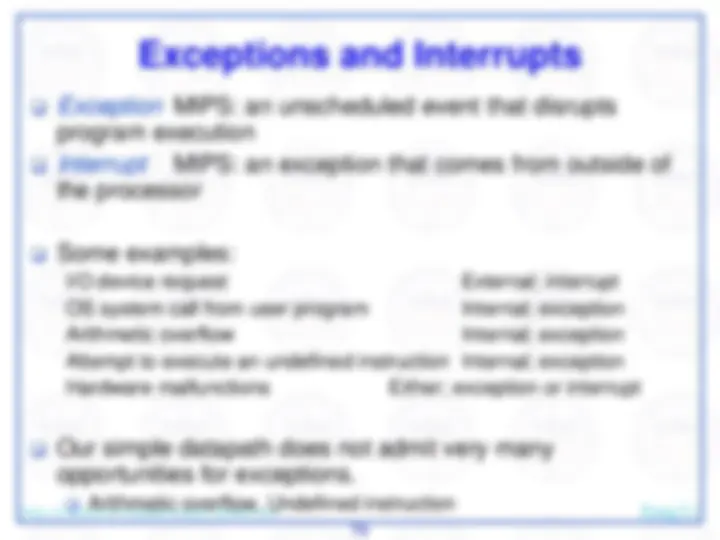
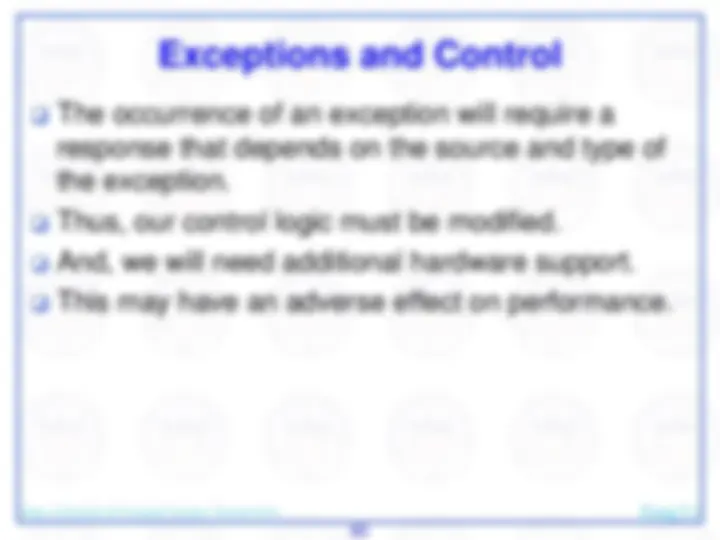
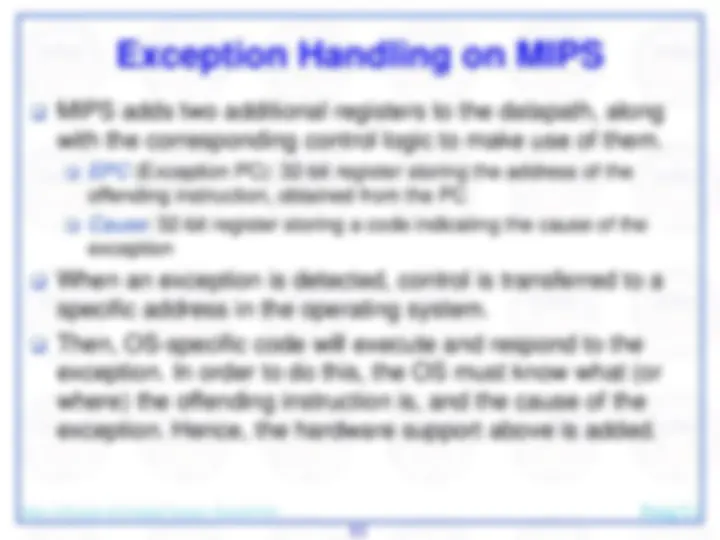
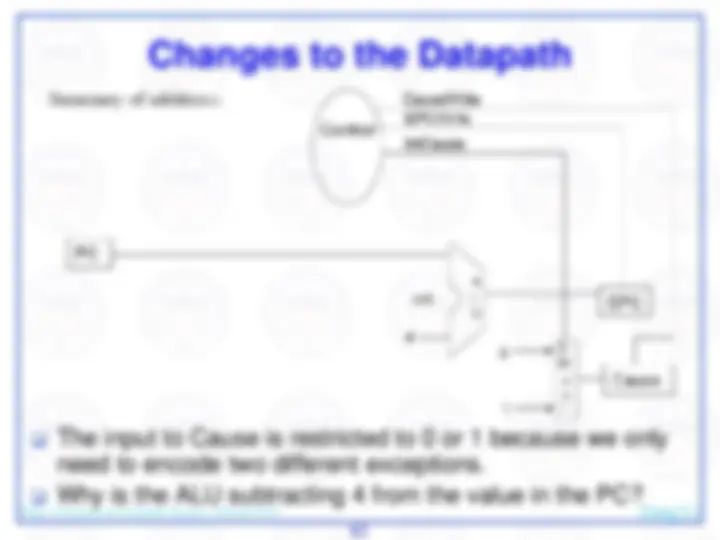
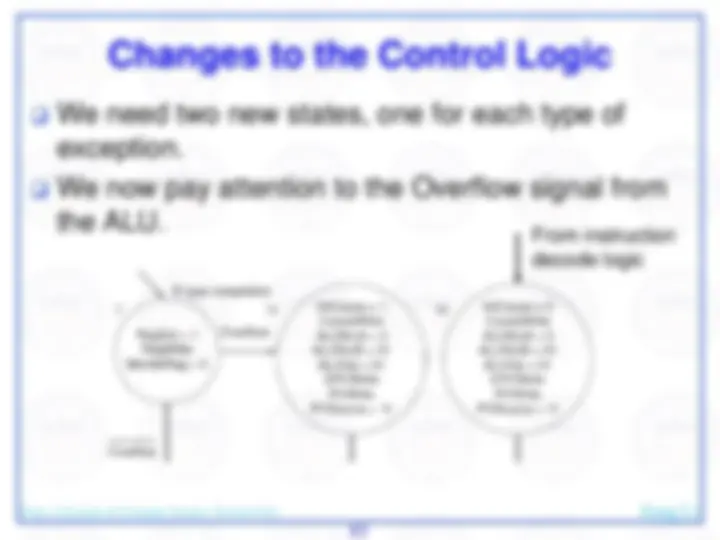
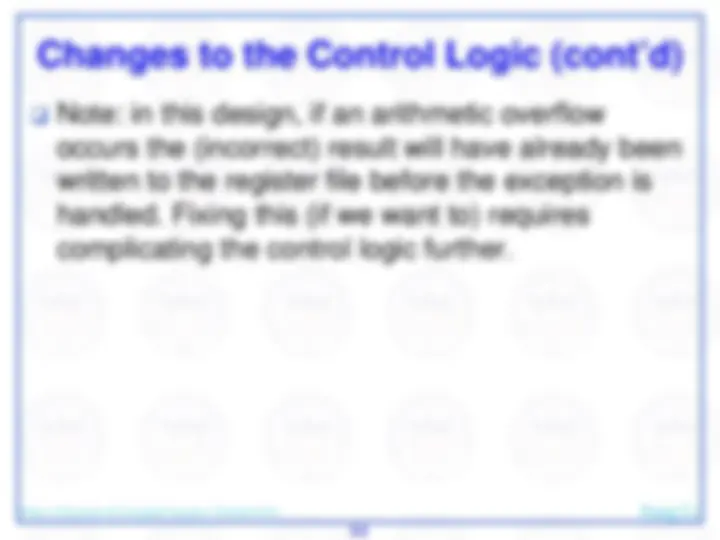
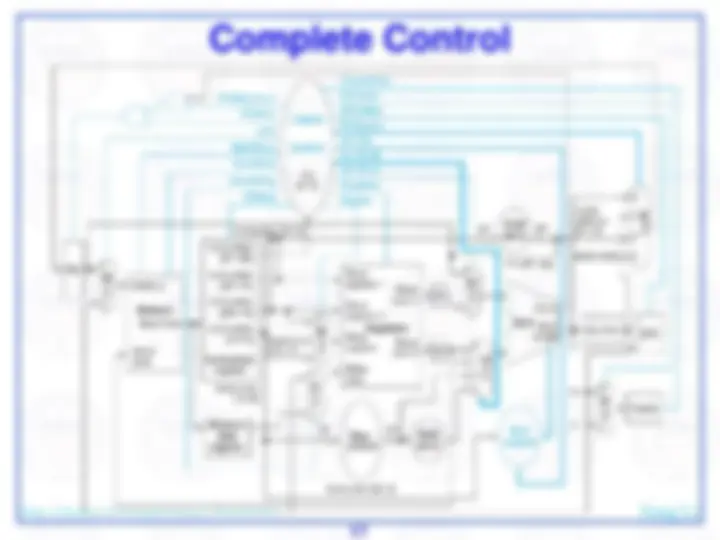
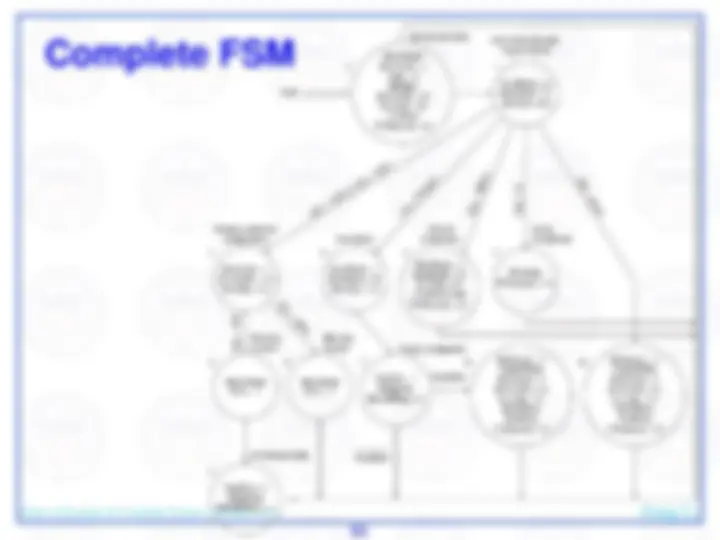
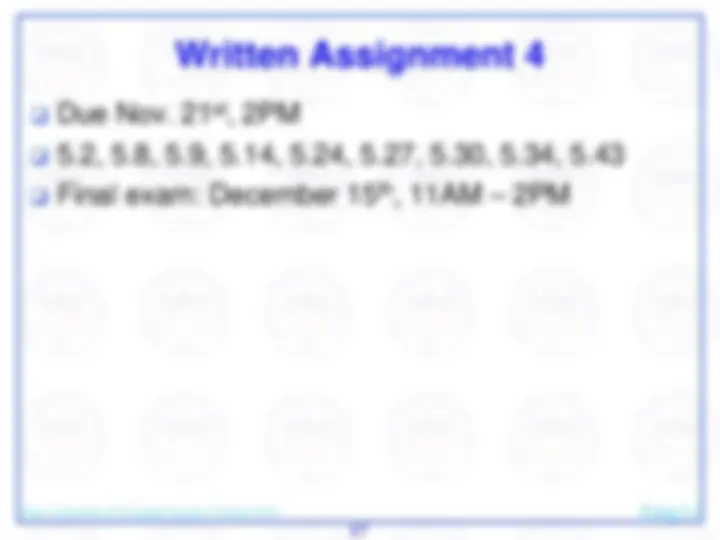


Study with the several resources on Docsity

Earn points by helping other students or get them with a premium plan


Prepare for your exams
Study with the several resources on Docsity

Earn points to download
Earn points by helping other students or get them with a premium plan
Community
Ask the community for help and clear up your study doubts
Discover the best universities in your country according to Docsity users
Free resources
Download our free guides on studying techniques, anxiety management strategies, and thesis advice from Docsity tutors
A slide presentation by jiang li from the department of systems & computer science at howard university. The presentation covers the fundamentals of datapath and control in computer architecture, including the role of the register file, the processing of arithmetic and memory-access instructions, branch instructions, and the unified datapath. The presentation also discusses the control signals and their effects on instruction execution.
Typology: Papers
1 / 87

This page cannot be seen from the preview
Don't miss anything!
















































































Dept. of Systems & Computer Science, Howard Univ. Jiang Li
Dr. Jiang Li
Slides adapted from various sources (e.g. VT, RPI, UCSB etc)
Dept. of Systems & Computer Science, Howard Univ. Jiang Li
Data path The component of the processor that performs arithmetic and logic operations. Control The component of the processor that commands the datapath, memory, and I/O devices according to the instructions of the program.
Dept. of Systems & Computer Science, Howard Univ. Jiang Li
Here's an abstract view of the basic architecture needed to implement our subset of the MIPS environment:
We will first examine the problem of fetching instructions and updating the address in the program counter, common for the execution of all instructions.
Dept. of Systems & Computer Science, Howard Univ. Jiang Li
The basic steps are to send the address in the program counter (PC) to the instruction memory, obtain the specified instruction, and increment the value in the PC. For now, we assume sequential execution. Eventually the instruction memory will need write facilities (to load programs), but we ignore that for now. For now, the adder need only add the MIPS word size to the PC to prepare for loading the next instruction. The fetched instruction will be used by other portions of the datapath…
Dept. of Systems & Computer Science, Howard Univ. Jiang Li
register file contains the 32 registers
adder computes target address for branch
ALU evaluates beq test
sign-extension for 16-bit address from instruction
control logic selects appropriate value for updating PC
Dept. of Systems & Computer Science, Howard Univ. Jiang Li
We assume each instruction can be completed during a single clock cycle… that will be addressed later…
mux chooses correct address to update PC
Dept. of Systems & Computer Science, Howard Univ. Jiang Li
We need a control element to decode the 6-bit opcode
For arithmetic/logic instructions, we also need a control element to decode the fn field
…and branch control
Dept. of Systems & Computer Science, Howard Univ. Jiang Li
ALU has 4 control inputs Only 6 combinations are used
Not used in our discussion
Dept. of Systems & Computer Science, Howard Univ. Jiang Li
The truth table for the 4 ALU control bits (called Operation)
What is the Boolean expression for Operation?
Dept. of Systems & Computer Science, Howard Univ. Jiang Li
A Boolean algebra is a set B of values together with: Two binary operations, usually denoted by + and · , A unary operation, usually denoted by ¯, Two elements usually called zero and one … such that certain axioms are satisfied: Associativity of each binary operation over the other, Commutativity of each each binary operation, Distributivity of each binary operation over the other, Absorption rules, Existence of complements with respect to each binary operation
Dept. of Systems & Computer Science, Howard Univ. Jiang Li
Absorption Laws : for all a , b and c in B , a + (a ⋅ b) = a a ⋅ (a + b) = a Existence of Complements : for all a in B , there exists an element ā in B such that a + ā = 1 a ⋅ ā = 0
Dept. of Systems & Computer Science, Howard Univ. Jiang Li
De Morgan's Laws are useful theorems that can be derived from the fundamental properties of a Boolean algebra.
Double-negation law :
For all a and b in B , a + b = a ⋅ b a ⋅ b = a + b
a = a
Dept. of Systems & Computer Science, Howard Univ. Jiang Li
A Boolean expression is defined in terms of the three basic Boolean operators and variables which may take on the values 0 and 1. For example:
A Boolean equation is an assertion that two Boolean expression are equal , where equal means that the values of the two expressions are the same for all possible assignments of values to their variables. For example:
1 2 1 2 3 1 2 3
0 0 0 0 y x x x x x x x x
z x y x y
⋅ + ⋅ ⋅ + ⋅ +
x 0 (^) ⋅ y 0 + x 0 ⋅ y 0 = ( x 0 + y 0 )⋅( x 0 + y 0 )
Dept. of Systems & Computer Science, Howard Univ. Jiang Li
Sum is 1 for A ⋅ B and A ⋅ B